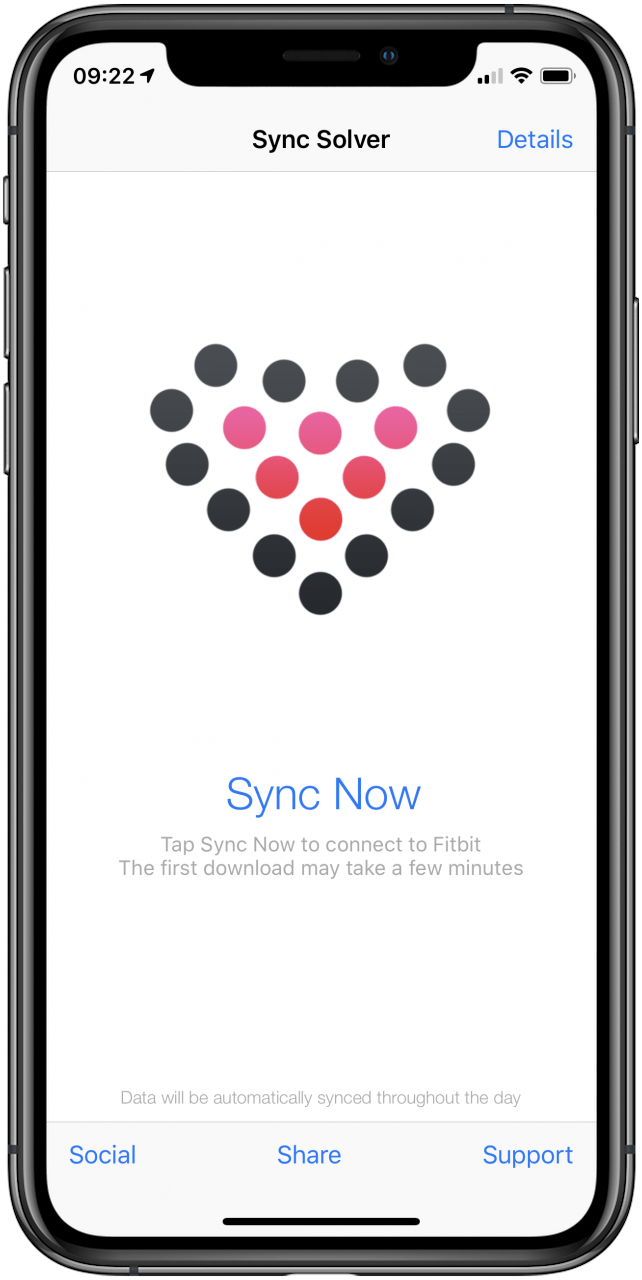

We found this buzz feature to be more successful in waking us up than a traditional alarm clock. If you have a difficult time waking up in the morning, you can also use the Flex as a silent alarm that will buzz your wrist at a certain predetermined time to ensure you're awake. Once you wake up for the day, repeat the rapid tapping to close out sleep mode, then sync with your device to find out how good or poor your sleep cycle was. To engage sleep mode, rapidly tap on the tracker for a few seconds until you feel a few buzzes. Like most other fitness bands, the Flex has a built-in sleep tracker to help analyze the quality of your sleep. These features are becoming more and more common in fitness wearables, and make the Fitbit Flex start to show its age. However, it doesn't measure heart rate like the Withings Pulse, nor does it track stairs climbed like the Fitbit Force. We like that the Flex measures distance in both steps taken and miles traveled and keeps track of how many calories you burn throughout the day. Individual users may get slightly different numbers based on how much or little you move your arms when walking/running, but overall results were well within the expected margin of error for such devices. A walk of 1.41 miles, as measured by MapMyRun, was recorded as 1.28 miles on the Flex. When it comes to accuracy, the Fitbit Flex is on a par with the rest of the fitness wearables. You can also manually add things that aren't in the company's database, and you can expand your food-tracking functionality by using one of the supported third-party apps like LoseIt! Performance If you use Fitbit's built-in food tracking program, each time you select a food item it's added to your "most recent" and "most frequent" sections in the Add Food menu. Searching for banana, for example, yielded about 600 results in the Web app, and about 30 in the mobile app, so any variation of a banana-containing food is likely to be found. Fitbit's mobile and Web apps have a comprehensive database of foods, increasing the likelihood you can find the exact food you're eating to add to your log. The food you put in your body plays an important role in your overall health, and Fitbit provides multiple ways for users to track their daily food consumption.
#Review fitbit app for mac computer full#
For a full list of supported devices, head over to Fitbit's devices page.
#Review fitbit app for mac computer android#
If you'd rather sync to your PC or don’t have a supported smart device, the Flex will automatically sync when in range of the USB dongle, provided the dongle is plugged into your powered-on PC or Mac.Īt the time of publication, most of the more popular Android phones as well as all iPhone and iPad devices supported Bluetooth 4.0 syncing. When in range, the Flex automatically syncs at various intervals with your device, and again every time you launch the app. The most seamless way to sync your Flex is with your iOS or Android device over Bluetooth 4.0.

In order to access your data, you'll need to sync your Flex to either your computer or smartphone. Making use of each of these additional categories gives you additional ways to manage your overall health and activity so you can achieve your fitness goals. The former two categories can be automatically tracked if you're using the Fitbit Aria connected scale ($129), or you can manually enter the data using the scale and body fat meters you may already have. With either the mobile or Web Fitbit apps, you can also manage and track your weight, body fat percentage and manually log additional workout activities you've done throughout the day. That said, while Fitbit's apps have improved over the months we've been using the Flex, we prefer Jawbone's UI with its polished graphs, easy navigation and level of detail provided on certain metrics like sleep activity. The location of each of the categories made sense, and it was easy for us to quickly find the information we were looking for. We found that the interface on the Android, iOS and Web apps were appealing and intuitive to use.


 0 kommentar(er)
0 kommentar(er)
